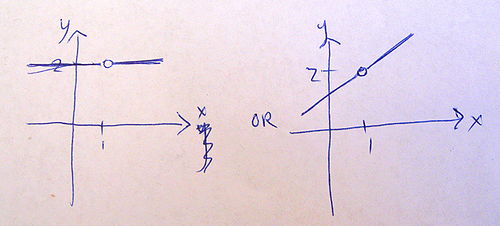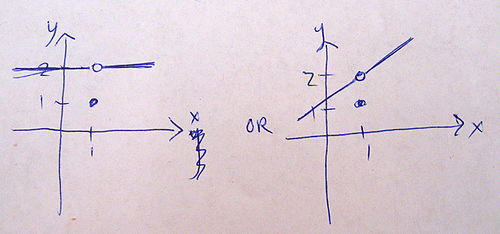Science:Math Exam Resources/Courses/MATH110/December 2012/Question 02 (c)
{{#incat:MER QGQ flag|{{#incat:MER QGH flag|{{#incat:MER QGS flag|}}}}}}
• Q1 (a) • Q1 (b) • Q2 (a) • Q2 (b) • Q2 (c) • Q2 (d) • Q2 (e) • Q2 (f) • Q3 (a) • Q3 (b) • Q3 (c) • Q3 (d) • Q4 • Q5 • Q6 • Q7 (a) • Q7 (b) • Q8 • Q9 (a) • Q9 (b) • Q9 (c) • Q10 •
Question 02 (c) |
|---|
|
Determine whether the following statement is true or false. If it is true, provide justification. If it is false, provide a counterexample. If , then . |
|
Make sure you understand the problem fully: What is the question asking you to do? Are there specific conditions or constraints that you should take note of? How will you know if your answer is correct from your work only? Can you rephrase the question in your own words in a way that makes sense to you? |
|
If you are stuck, check the hint below. Consider it for a while. Does it give you a new idea on how to approach the problem? If so, try it! |
Hint |
|---|
|
What's the difference between a limit and an evaluation? Try drawing a picture! |
|
Checking a solution serves two purposes: helping you if, after having used the hint, you still are stuck on the problem; or if you have solved the problem and would like to check your work.
|
Solution |
|---|
|
Remember that a limit describes the y-values of a graph around, but not at the x-value, whereas gives the y-value of a graph at x. So drawing a picture where (y-values are equal to 2 near x = 1) could look like this: But, , the y-value at x = 1, could be equal to something else, like 1: Because the conclusion of the statement is not necessarily true, the statement is false. |
{{#incat:MER CT flag||
}}







